The Dancers Of The Sea | Peter Chadwick

The dancers of the sea | Peter Chadwick
More Posts from Llamaslikesciencetoo and Others

Microfilter allows non-invasive diagnosis of fetal abnormalities
A new method could allow physicians to diagnose fetal genetic abnormalities during pregnancy without the risks involved in current techniques.
A team of scientists at the Agency for Science, Technology and Research (A*STAR) Institute of Microelectronics (IME) has fabricated a microchip that can filter fetal red blood cells from the mother’s circulation. Retrieving these isolated fetal cells could allow the early diagnosis of fetal genetic abnormalities.
The technique, which would require drawing only a few millilitres of blood from an expecting mother, could be used from the eighth week of pregnancy; earlier than current prenatal diagnostic procedures.

Brain guardians remove dying neurons
By adolescence, your brain already contains most of the neurons that you’ll have for the rest of your life. But a few regions continue to grow new nerve cells—and require the services of cellular sentinels, specialized immune cells that keep the brain safe by getting rid of dead or dysfunctional cells.
Now, Salk scientists have uncovered the surprising extent to which both dying and dead neurons are cleared away, and have identified specific cellular switches that are key to this process. The work was detailed in Nature on April 6, 2016.
“We discovered that receptors on immune cells in the brain are vital for both healthy and injured states,” says Greg Lemke, senior author of the work, a Salk professor of molecular neurobiology and the holder of the Françoise Gilot-Salk Chair. “These receptors could be potential therapeutic targets for neurodegenerative conditions or inflammation-related disorders, such as Parkinson’s disease.”
Salk scientists show that two immune cell receptors, called Mer and Axl, are responsible for consuming dead or dysfunctional brain cells. An accumulation of dead cells (green spots) is seen in the subventricular zone (SVZ) – a neurogenic region – of the brain in a mouse lacking the receptors Mer and Axl. (Blue staining marks all cells.) No green spots are seen in the SVZ from a normal mouse. Credit: Salk Institute


The tardigrade genome has been sequenced, and it has the most foreign DNA of any animal
Scientists have sequenced the entire genome of the tardigrade, AKA the water bear, for the first time. And it turns out that this weird little creature has the most foreign genes of any animal studied so far – or to put it another way, roughly one-sixth of the tardigrade’s genome was stolen from other species. We have to admit, we’re kinda not surprised.
A little background here for those who aren’t familiar with the strangeness that is the tardigrade – the microscopic water creature grows to just over 1 mm on average, and is the only animal that can survive in the harsh environment of space. It can also withstand temperatures from just above absolute zero to well above the boiling point of water, can cope with ridiculous amounts of pressure and radiation, and can live for more than 10 years without food or water. Basically, it’s nearly impossible to kill, and now scientists have shown that its DNA is just as bizarre as it is.
So what’s foreign DNA and why does it matter that tardigrades have so much of it? The term refers to genes that have come from another organism via a process known as horizontal gene transfer, as opposed to being passed down through traditional reproduction.
Horizontal gene transfer occurs in humans and other animals occasionally, usually as a result of gene swapping with viruses, but to put it into perspective, most animals have less than 1 percent of their genome made up of foreign DNA. Before this, the rotifer – another microscopic water creature – was believed to have the most foreign genes of any animal, with 8 or 9 percent.
But the new research has shown that approximately 6,000 of the tardigrade’s genes come from foreign species, which equates to around 17.5 percent.
“We had no idea that an animal genome could be composed of so much foreign DNA,” said study co-author Bob Goldstein, from the University of North Carolina at Chapel Hill. “We knew many animals acquire foreign genes, but we had no idea that it happens to this degree.”
Continue Reading.

The blood vessels on your head.
Amazing, this is a crinoid swimming (edited after comments)
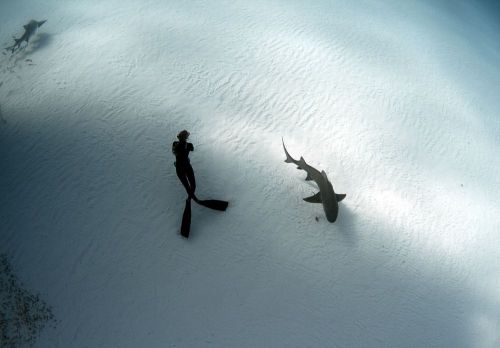

laser-free diet.

It’s been years since I first learned about it and I still can’t get over the fuckin fact that box jellyfish have EYES. JELLYFISH WITH EYES. THIS JELLYFISH IS LOOKING AT YOU. THE THINGS THAT LOOK LIKE EYES ARE ITS EYES. IT HAS THEM. A JELLYFISH.
70 Ask-Questions for Science people... because Science
What’s your major/field?
What made you choose your major/field?
What’s your favorite thing to do in the lab?
What’s the most interesting lab story?
What’s your favorite class?
Which professors do you ship together?
Annoying things your labmates do?
What are your thoughts on animal testing?
Any chemical burns or lab related accidents?
On a scale from 1 to 10 how sensitive are your lab scales?
Who’s your favorite scientist?
Who’s your least favorite scientist?
Favorite female scientists?
Do you do field work? What kind?
Ever tasted an experiment?
What are your typical daydreams about?
How often do you say “for science”?
Do you think about murdering someone with science?
Ever used your scientific knowledge for “bad” stuff?
Whats the most “evil scientist” thing you can think of?
If you had infinite funding, what would your research be about?
What is your favorite scientific theory?
Is a scientific mind attractive to you?
What is your title?
What is the role of technology in your field?
What do you enjoy most about doing science?
What do you enjoy least about doing science?
What is your tolerance on stupidity?
What are your strengths in your field of study?
Your weaknesses?
Do you have a bit of a god complex?
Why are biology majors so….you know..
What motivates you?
Do you like being supervised?
Describe your analytic abilities.
How would your friends describe you?
How would your professors describe you?
Is math a little bit too mathy for you?
Do you code? if yes, how many languages?
Thoughts on AI and robots?
What’s your favorite science blog?
Philosophical views on humanity and nature?
What are your short term and long term career goals?
Do you understand general relativity?
Favorite Dinosaur? Fossil? whatever…
How many bones can you name in medical terms?
How many muscles can you name in medical terms?
What’s your favorite molecule?
Do you like proofs or cold hard Mathematics?
What’s your favorite element?
Favorite show?
Favorite scientific fictional character?
What’s your favorite micro organism?
Have you ever held an organ in your hands?
Lab coats?
What about … lab goats?
White latex gloves or blue ones?
What’s the most dangerous experiment you’ve done in the lab?
What was the first time you got caught doing science?
What was you’r parent’s reaction when you told them you’re a scientist?
Except for lab coats in the bedroom what other kinks do you have?
What would you do a TED talk on?
Are you creative, artistic?
Do you have an attractive professor you can’t pay attention to?
What’s your favorite mineral?
What scientific books would you recommend?
Thoughts on spectral analysis?
Any interesting stories from the lab?
Ever did or thought about doing it or someone in the lab?
How much science is too much science?
Compiled by: rudescience
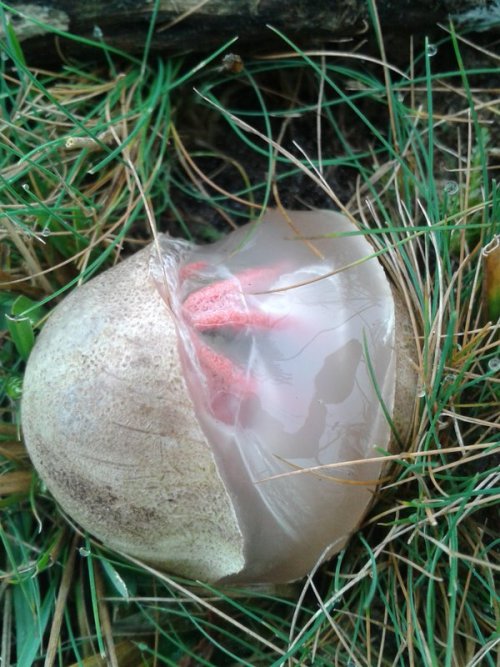
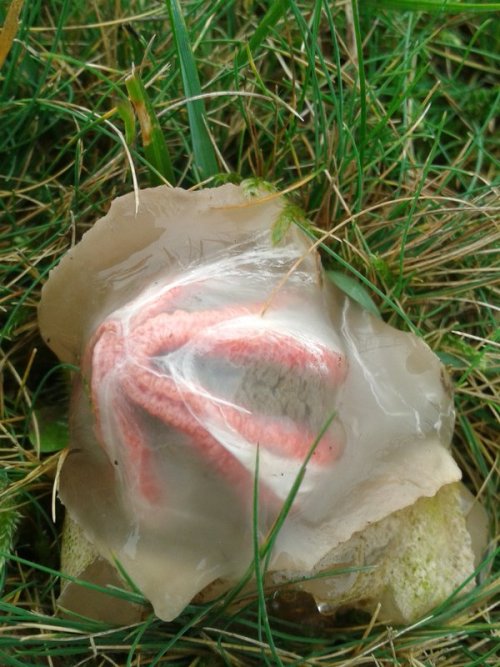
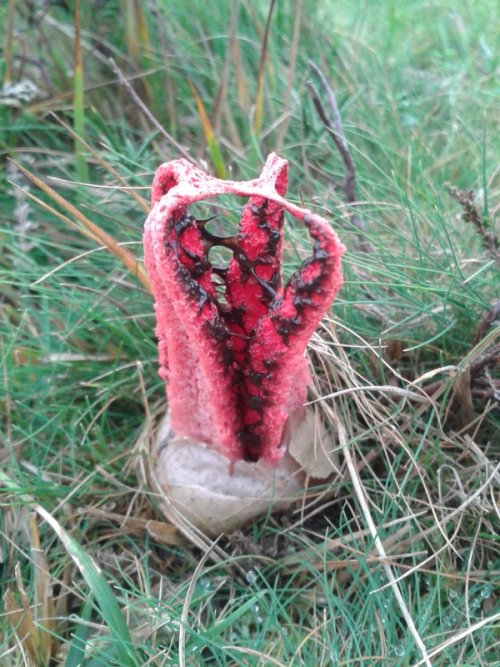
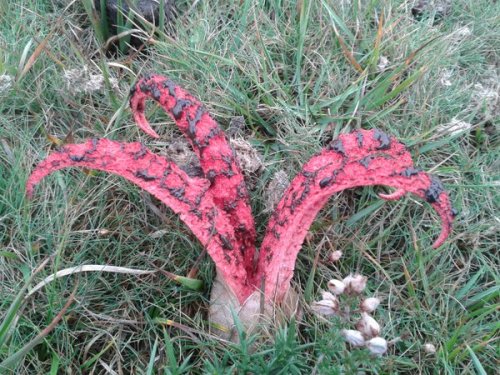
(image credit to Dan Hoare on twitter)
I ONLY JUST LEARNED ABOUT THE EXISTENCE OF THIS MUSHROOM????? WHICH ERUPTS FROM AN EGG BEFORE UNCURLING HELLISH ARMS, EXPOSING ITS STICKY MASS OF SPORES TO BE SPREAD BY FLIES ATTRACTED BY THE SCENT OF ROTTING FLESH???
Admittedly, I am easily won over by all organisms that attract flies with the scent of rotting flesh. But the octopus stinkhorn (Clathrus archeri) also has tentacles, a freaky egg stage, and blackish goop, so it’s my favorite now.
-
 whalehumpback liked this · 8 years ago
whalehumpback liked this · 8 years ago -
 thayet liked this · 8 years ago
thayet liked this · 8 years ago -
 oopstimusprime liked this · 8 years ago
oopstimusprime liked this · 8 years ago -
 cataradical reblogged this · 8 years ago
cataradical reblogged this · 8 years ago -
 consideringhobbits liked this · 8 years ago
consideringhobbits liked this · 8 years ago -
 kingyo-fan reblogged this · 8 years ago
kingyo-fan reblogged this · 8 years ago -
 mauimermaid reblogged this · 8 years ago
mauimermaid reblogged this · 8 years ago -
 animal-planets reblogged this · 8 years ago
animal-planets reblogged this · 8 years ago -
 ofoceanwarters reblogged this · 8 years ago
ofoceanwarters reblogged this · 8 years ago -
 ofoceanwarters reblogged this · 8 years ago
ofoceanwarters reblogged this · 8 years ago -
 curlyheadedhat reblogged this · 8 years ago
curlyheadedhat reblogged this · 8 years ago -
 morphomorphinae reblogged this · 8 years ago
morphomorphinae reblogged this · 8 years ago -
 animal-planets reblogged this · 8 years ago
animal-planets reblogged this · 8 years ago -
 three-days-gracie-blog reblogged this · 8 years ago
three-days-gracie-blog reblogged this · 8 years ago -
 musictherapy611 liked this · 8 years ago
musictherapy611 liked this · 8 years ago -
 enchantedtigress reblogged this · 8 years ago
enchantedtigress reblogged this · 8 years ago -
 creeptale-au-blog liked this · 8 years ago
creeptale-au-blog liked this · 8 years ago -
 ekhhhhhh liked this · 8 years ago
ekhhhhhh liked this · 8 years ago -
 become-in-silhouettes liked this · 8 years ago
become-in-silhouettes liked this · 8 years ago -
 secrets-of-the-angels liked this · 9 years ago
secrets-of-the-angels liked this · 9 years ago -
 la-vivis-vlog liked this · 9 years ago
la-vivis-vlog liked this · 9 years ago -
 jewelschizzle liked this · 9 years ago
jewelschizzle liked this · 9 years ago -
 claym0r3 reblogged this · 9 years ago
claym0r3 reblogged this · 9 years ago -
 weyheyliah liked this · 9 years ago
weyheyliah liked this · 9 years ago -
 geosmin-smell liked this · 9 years ago
geosmin-smell liked this · 9 years ago -
 primaveracity liked this · 9 years ago
primaveracity liked this · 9 years ago -
 peach-papaya reblogged this · 9 years ago
peach-papaya reblogged this · 9 years ago -
 noahfromthesea reblogged this · 9 years ago
noahfromthesea reblogged this · 9 years ago -
 diazepam-80mg reblogged this · 9 years ago
diazepam-80mg reblogged this · 9 years ago -
 naked-body-naked-soul reblogged this · 9 years ago
naked-body-naked-soul reblogged this · 9 years ago -
 unstable-bodies-of-water reblogged this · 9 years ago
unstable-bodies-of-water reblogged this · 9 years ago -
 violoncell0 liked this · 9 years ago
violoncell0 liked this · 9 years ago -
 ephemeraww reblogged this · 9 years ago
ephemeraww reblogged this · 9 years ago -
 ephemeraww liked this · 9 years ago
ephemeraww liked this · 9 years ago -
 orcavian-blog reblogged this · 9 years ago
orcavian-blog reblogged this · 9 years ago -
 hopelessairlines reblogged this · 9 years ago
hopelessairlines reblogged this · 9 years ago -
 moonsphinx reblogged this · 9 years ago
moonsphinx reblogged this · 9 years ago -
 rippedjeansandcoffeebeans reblogged this · 9 years ago
rippedjeansandcoffeebeans reblogged this · 9 years ago -
 moonsphinx liked this · 9 years ago
moonsphinx liked this · 9 years ago -
 the-girl-from-andromeda reblogged this · 9 years ago
the-girl-from-andromeda reblogged this · 9 years ago -
 a-teacup-tale reblogged this · 9 years ago
a-teacup-tale reblogged this · 9 years ago
Mainly interested in ecology, but also the entirety of science.
179 posts